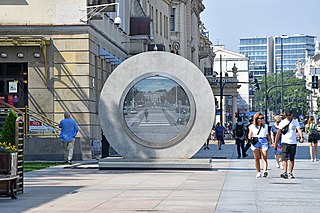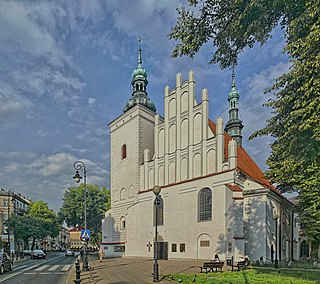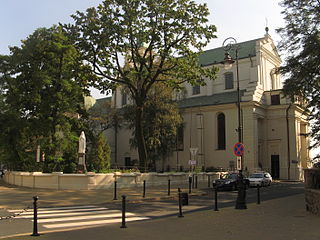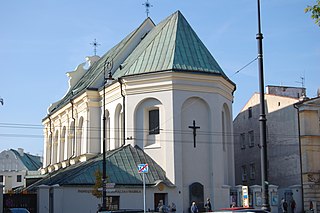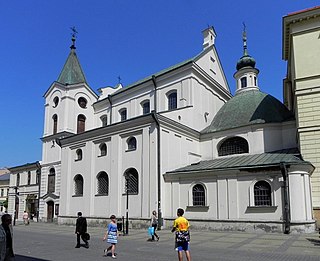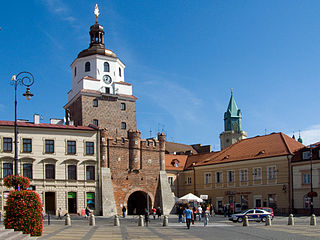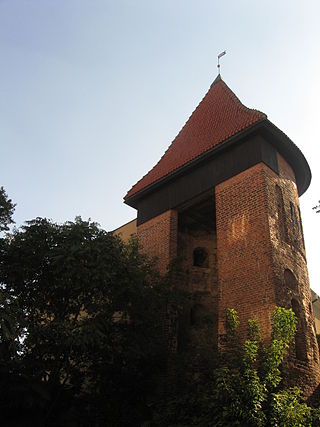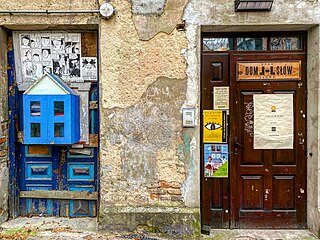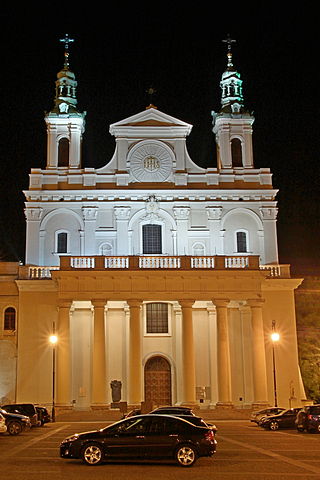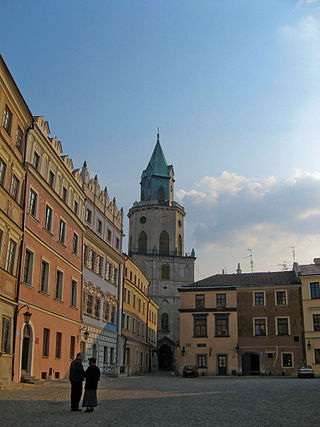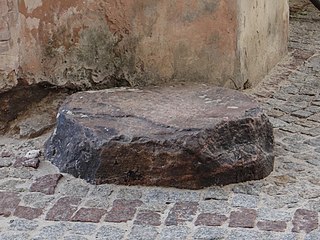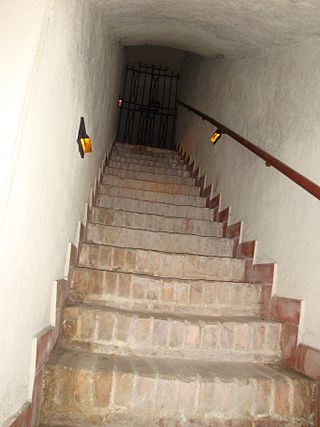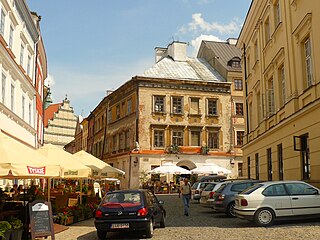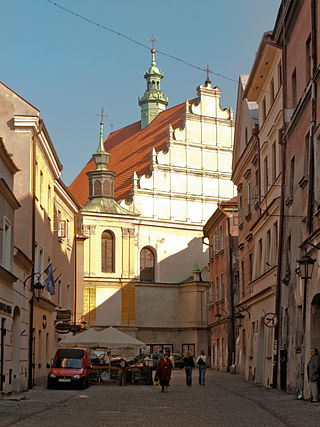Self-guided Sightseeing Tour #1 in Lublin, Poland
Legend
Guided Free Walking Tours
Book free guided walking tours in Lublin.
Guided Sightseeing Tours
Book guided sightseeing tours and activities in Lublin.
Tour Facts
2.1 km
46 m
Experience Lublin in Poland in a whole new way with our free self-guided sightseeing tour. This site not only offers you practical information and insider tips, but also a rich variety of activities and sights you shouldn't miss. Whether you love art and culture, want to explore historical sites or simply want to experience the vibrant atmosphere of a lively city - you'll find everything you need for your personal adventure here.
Activities in LublinIndividual Sights in LublinSight 1: Portal Wilno-Lublin
The Vilnius–Lublin Portal is a public attraction that videoconferences between separate outdoor structures in Vilnius, Lithuania, and Lublin, Poland.
Sight 2: Kościół pw. Wniebowzięcia Najświętszej Maryi Panny Zwycięskiej
The Rector Church of the Assumption of the Blessed Virgin Mary Victorious or the Post-Visitation or Post-Bridgettine Church – one of the most valuable monuments of the Gothic and Renaissance in Lublin.
Wikipedia: Kościół Matki Bożej Zwycięskiej w Lublinie (PL), Website
Sight 3: Kościół pw. Nawrócenia Świętego Pawła Apostoła
Bernardine Church of the Conversion of St. Paul in Lublin – a brick church, erected in the years 1470–1497, and then rebuilt after fires in the years 1557–1569 and 1602–1630. Subsequent renovations took place in 1762 and 1790; In 1827, the western gable was rebuilt and a porch was added. Subsequent renovations in the years 1850–1860, in 1903 the façade was rebuilt and the roof was lowered. The church was renovated several times, also in the twentieth century. It is located at 5 Bernardyńska Street.
Wikipedia: Kościół Nawrócenia św. Pawła w Lublinie (PL), Website
Sight 4: Kościół pw. Świętego Piotra Apostoła
The Church of St. Peter the Apostle in Lublin – a historic Roman Catholic church located in Lublin, built in the years 1636–1658. Until the fire in 1768, it bore the hallmarks of the Lublin Renaissance. In 1780, the reconstruction was completed, giving the church a Baroque style. The interior, covered in 1899 with neo-baroque polychrome by Władysław Barwicki, was also transformed. Since 1920, the church belonged to the Jesuits, who in November 2015 gave it to the Archdiocese of Lublin.
Sight 5: Kościół pw. Świętego Ducha
The Church of the Holy Spirit in Lublin is a Roman Catholic church of the Holy Spirit in Lublin, in the Archdiocese of Lublin.
Wikipedia: Kościół Świętego Ducha w Lublinie (PL), Url, Url 0, Url 1
Sight 6: Muzeum Historii Miasta Lublina
The Museum of the History of the City of Lublin is a branch of the National Museum in Lublin. It is located in the building of the historic Krakowska Gate. It was established as the Historical Department in 1965. The permanent exhibition "History of the City" organized there presents the history of Lublin from the settlement period to 1944. The exhibits are located on four floors, around a spiral staircase. From the top floor, you can watch the panorama of the city in all directions.
Sight 7: Baszta Gotycka
The Gothic Tower, due to its shape, also known as the Semicircular Tower – a Gothic tower in Lublin. Reconstructed in the 80s of the twentieth century, which is, together with a fragment of the defensive walls, a testimony to the Gothic fortifications of the Old Town. The tower was built in 1341 together with defensive walls, made of stone and faced with bricks. Wooden platforms allowed defenders access to the embrasures. The shooting porches allowing access to the slit and key loopholes have not survived.
Sight 8: Dom Słów- Izba Drukarstwa
The House of Words – museum of typography in Poland, is a multimodal education center. It familiarizes audience with poetry and art, old techniques of printing, and the history and achievements of Lublin printing industry.
Sight 9: Archikatedra Świętego Jana Chrzciciela i Świętego Jana Ewangelisty
The Cathedral of Saint John the Baptist or simply Lublin Cathedral in Lublin, Poland is the cathedral church of the Roman Catholic Archdiocese of Lublin.
Wikipedia: St. John the Baptist Cathedral, Lublin (EN), Website , Url, Heritage Website, Url 0, Url 1
Sight 10: Wieża Trynitarska
Trinitarian Tower in Lublin – a neo-Gothic tower-belfry is the highest historic highway point in Lublin. From the viewing platform, at a height of 40 meters, there is a vast panorama of the city. The name of the tower comes from the Trinitarian Order, who stayed in the post-Jesuit monastery buildings located near the tower. Currently, it houses the Archdiocesan Museum.
Sight 11: Głaz Katowski-Kamień Nieszczęścia
The Stone of Misfortune – a stone located in Lublin at the intersection of Prezydent Teodora Gruella and Jezuicka Streets. Legends about this stone say that touching it brings bad luck.
Sight 12: Lubelska Trasa Podziemna
Lublin Underground Route – an approximately 300-meter tourist route running under the buildings of the Old Town in Lublin.
Sight 13: kamienica pod lwami
The House Under the Lions – also known as the Cholewin Tenement House, a Renaissance tenement house in Lublin, originally owned by Jerzy Organista. Its cornice is decorated with three lions carved in stone.
Sight 14: Muzeum Literackie imienia Józefa Czechowicza
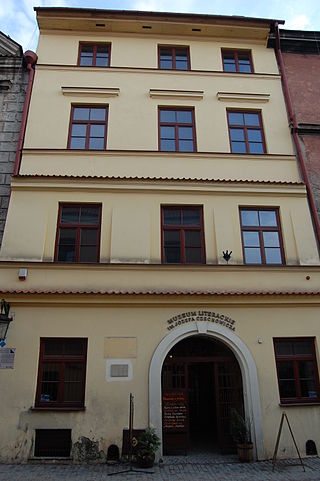
The Józef Czechowicz Literary Museum is a branch of the National Museum in Lublin. The main purpose of the institution is to collect, store, process and make available manuscripts, exhibits, publications and scientific materials related to the life and work of Józef Czechowicz, as well as other writers from the Lublin region. It is located in the Old Town of Lublin.
Wikipedia: Muzeum Literackie im. Józefa Czechowicza w Lublinie (PL)
Sight 15: Teatr Stary
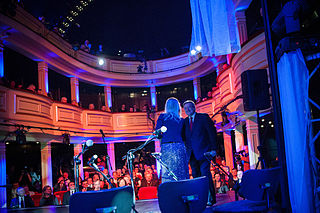
The Old Theatre in Lublin - an impresario theater in Lublin opened in 1822. Initially it housed the Lublin Drama and Opera Stages, and in the 20th century also a cinema.
Sight 16: Kościół pw. Świętego Stanisława Biskupa i Męczenika
The Basilica of St. Stanislaus the Martyr Bishop, also known as the Basilica of the Holy Cross Relics (Wood) or the Dominican Church – one of the oldest temples in Lublin, together with the monastery, is one of the longest existing institutions of this city.
Wikipedia: Bazylika św. Stanisława Biskupa Męczennika w Lublinie (PL), Url
Share
How likely are you to recommend us?
Disclaimer Please be aware of your surroundings and do not enter private property. We are not liable for any damages that occur during the tours.
GPX-Download For navigation apps and GPS devices you can download the tour as a GPX file.
